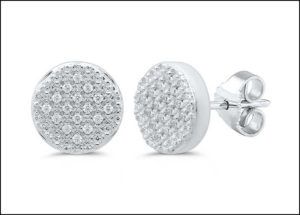Self-Purchase, No. 1 Motivation to Buy Jewelry
Self-purchase is the top motivator for consumers to buy fine jewelry, per TPC Industry & Market Insights 2021.
Forty percent of the 1,000 U.S. jewelry consumers surveyed for the report rate self-purchase most important, followed by 31% citing special occasions, and 21% gifting as key influencers.
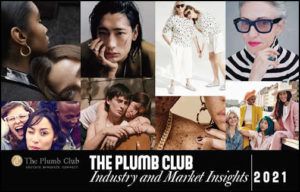 TPC’s consumer survey — conducted earlier this year, sampling women (60%) and men (40%), aged 25-60 in 10 regional markets across the country — found that nearly half of consumers (48%) are interested in new jewelry purchases for a special occasion, while nearly a quarter (23%) say they need no reason at all to make a fine jewelry purchase.
TPC’s consumer survey — conducted earlier this year, sampling women (60%) and men (40%), aged 25-60 in 10 regional markets across the country — found that nearly half of consumers (48%) are interested in new jewelry purchases for a special occasion, while nearly a quarter (23%) say they need no reason at all to make a fine jewelry purchase.
In a July 2021 survey conducted by THE MVEye for the Cultured Pearl Association of America (CPAA) of over 1,000 U.S. jewelry consumers, more than a third (35%) are self-described self-purchasers.
What’s exciting in this new data from THE MVEye is that not only women (35%), but also men (36%) self identify as self-purchasers of all types of fine jewelry. In fact, the report shows that all age groups, from 25-55, embrace the idea of buying fine jewelry for themselves, with the most enthusiastic group ages 25-35.
Women Strong
Recent jewelry market research by several industry organizations underscores the importance of the self-purchaser for jewelry sales moving forward. The JCK 2021 State of the Jewelry Industry Report, released this summer, hails the self-purchaser to be the “new buyer” the trade should focus on.
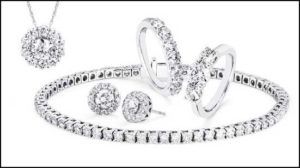 Women are expected to be the largest segment of customers in the future, reports Fortune Business Insights. It is estimated that by 2028 women will own 75% of the discretionary spend, making them the world’s greatest influencers. In fact, currently in the U.S. women drive 80%-85% of consumer purchasing through a combination of buying power and influence.
Women are expected to be the largest segment of customers in the future, reports Fortune Business Insights. It is estimated that by 2028 women will own 75% of the discretionary spend, making them the world’s greatest influencers. In fact, currently in the U.S. women drive 80%-85% of consumer purchasing through a combination of buying power and influence.
According to Lyst, women account for 78% of women’s jewelry purchases on the popular fashion platform. Just over half of Millennial women buy their own jewelry cites a Capital Counselors study. Not surprising, De Beers and the Women’s Jewelry Association launched campaigns targeting self-purchasing women.
Self Care
Theresa Namie, merchandise manager for Ostbye, in Minneapolis, Minnesota notes that female self-purchasers are different today than they were even one year ago. “So much has changed and so have we,” she says. “We are now really looking at overall wellbeing and self-care. In the jewelry world this can be interpreted as if I look good, I will feel better. The trend as gone from impulse buying into really thinking about what would look good and make me feel better.”
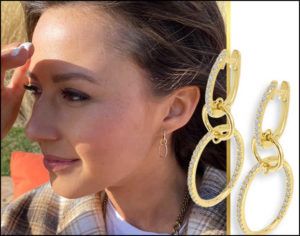 Most consumers (78%) say that colorful gemstone jewelry improves their mood, 40% believe jewelry conveys emotions and protects, finds TPC Insights, with 67% saying they wear jewelry that expresses their mood and personality. Sixty percent say they seek out jewelry with their birthstone (for its meaning) in the design. Consumers most prefer neutral (41%) and bright gemstones (31%) that are translucent or clear, according to the data.
Most consumers (78%) say that colorful gemstone jewelry improves their mood, 40% believe jewelry conveys emotions and protects, finds TPC Insights, with 67% saying they wear jewelry that expresses their mood and personality. Sixty percent say they seek out jewelry with their birthstone (for its meaning) in the design. Consumers most prefer neutral (41%) and bright gemstones (31%) that are translucent or clear, according to the data.
Allison Peck for the brand Brevani of New York is finding that more women want a special piece in their collection. “Women today want a unique piece of jewelry that speaks to them and reflects their personal taste,” she explains.
Men, too, have been investing in their appearance, from grooming products to fine jewelry — a Millennial influenced trend that continues with Gen Z. Men’s jewelry has become an increasingly important category, with self-purchasing men fueling the growth, reports Valerie Fletcher, vice president of design and product development for Original Designs Inc. (ODI) in New York.
Diamonds Special
THE MVEye research finds that diamond is the No. 1 gem desired in fine jewelry to self-purchase for 72% of consumers in its July survey, followed by sapphire (28%), pearl (16%), emerald (16%), and ruby (15%).
By gender, diamond is No. 1 for women (75%) and men (61%) and sapphire ranks second, for 31% of women and 20% of men, finds THE MVEye. Pearl is the third gem women desire, 18% versus 10% for men, and emerald and ruby appeal to 15% of women, 17% of men.
De Beers Group Lab-Grown Diamond Bi-annual Report found that 41% of 5,000 consumers surveyed consider natural diamonds a purchase that makes you feel good versus 6% of consumers who think that of lab-grown diamonds.
Yet lab-grown diamonds are fast becoming a self-purchase favorite in diamond fashion jewelry. De Beers Group Diamond Insights from late 2020 did find that 55% of female consumers would buy lab-grown diamonds for themselves. The report finds that consumers see lab-grown diamonds as new, modern, fun and appealing for self-purchase or impulse buy.
TPC Insights finds that 83% of consumers would consider buying a piece of fashion jewelry with lab-grown diamonds. Nearly half at 47% would prefer to buy a modern, fashion-forward design in lab-grown diamond jewelry, although 37% would buy lab-grown diamond classic/traditional jewelry as well (like studs, necklaces and tennis bracelets).
Among the design elements identified in TPC Insights for men include lots of black — diamonds, spinel, pearls, ceramic, enamel, and gold; blue and green stones, raw diamonds and uncut gems. “Men are looking for more unique and diverse options in fashion jewelry, says Fletcher.
Certainly, watches are leading statement piece for men, as well as a growing number of women. TPC Insights finds that the majority of jewelry consumers surveyed own up to four watches, 27% own more than that.
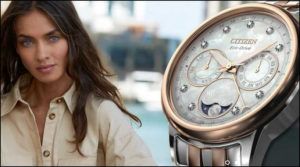
Data suggests that consumers are indulging and self-purchasing products like watches, specifically traditional analogs in the mid-price luxury range, Jeffery Cohen, president of Citizen Watches America, shared earlier this year. He expects to see this continue, with sell through driven by bestsellers and proven styles.
